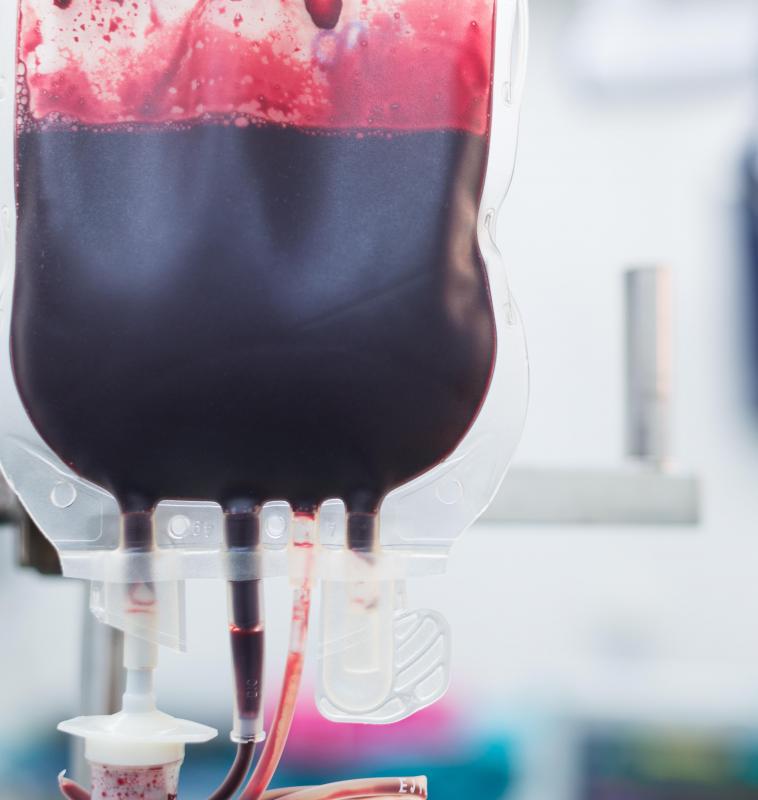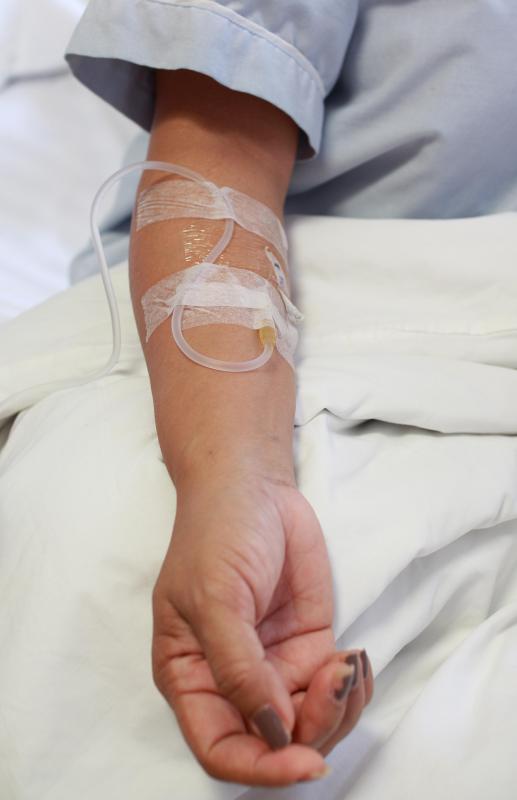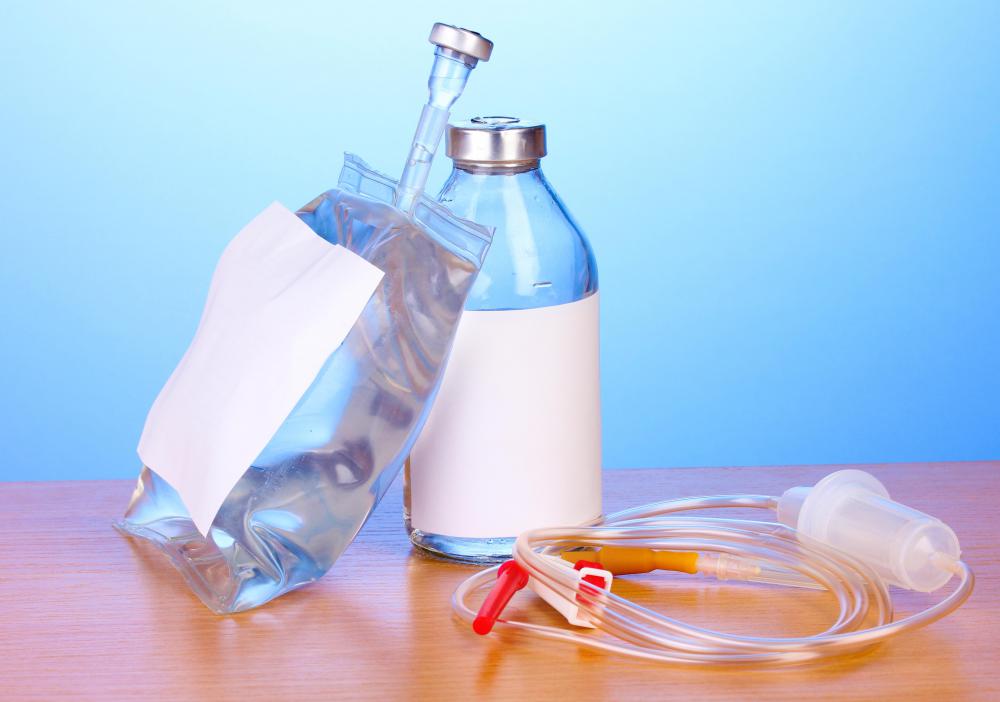At WiseGEEK, we're committed to delivering accurate, trustworthy information. Our expert-authored content is rigorously fact-checked and sourced from credible authorities. Discover how we uphold the highest standards in providing you with reliable knowledge.
What are the Different Types of Intravenous Solution?
Different types of intravenous (IV) solution may be used in different types of conditions. Typically, there are two main types of solution that may be used: colloids and crystalloids. Human blood is considered a colloid, as well as water mixed with insoluble materials such a gelatin. Crystalloids are usually composed of water and soluble materials like mineral salts.
Although there are different type of intravenous solution, they are generally delivered to the patient in the same way. A tube is inserted directly into the patient's vein using a needle, and solutions are delivered directly into the bloodstream via the tube. This is a much faster way to get medications, fluids, and blood into patients with severe illnesses. Solutions are often delivered using a “drip” method because it is generally more efficient.
Sometimes only one type of IV solution are added without medication. This is often the case for patients with severe dehydration. By providing fluids directly into the bloodstream, the body is able to absorb and use them more quickly.

Medications can also be included in the various different types of intravenous solution options. Chemotherapy is generally delivered this way, as well as many antibiotics to treat infections that have spread into more than one area. Other medications may also be added to help the blood flow more quickly, and therefore move the medicine throughout the body much faster.

When blood is administered intravenously, it is usually combined with a solution of some sort. This may be done when a patient has lost a large amount of blood, or in those who have forms of anemia where red blood cells must be transferred into the body. Blood is generally stored in small bags which can be attached to the IV during a transfusion. Typically, blood comes from donors unless the patient has previous given his own blood to be saved.

Most of the different types of intravenous solution options are used only in severe cases. When a patient can receive fluids or medications orally or through another method such a suppository, these are generally used instead. There are usually no serious side effects to using an intravenous solution, although there may be soreness at the injection site. In some rare cases, a patient may have an allergic reaction to a solution or medication being given through an IV. For this reason, patients should keep accurate notes on any allergies they may have.
AS FEATURED ON:
AS FEATURED ON:














Discussion Comments
My mom had an IV needle put in the fold of her arm. The doctor said she was being given lactated ringer solution through her IV. He said it would help her after her car wreck. She had lost a lot of blood and was very weak.
The last time I was given IV fluids was about a year ago. They put the needle in the back of my hand, which I am not sure why they did that. I had to have antibiotics for a very bad infection.
Post your comments